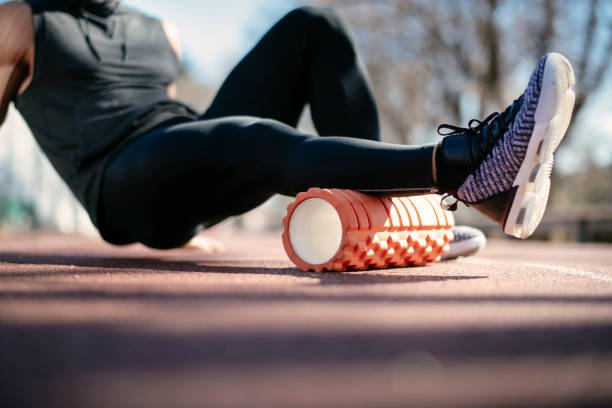The Myths & Facts of Foam Rolling
Foam Rolling FACTS
Research studies on foam rolling have found:
Foam rolling can decrease the sensation of DOMS (delayed onset muscle soreness) for up to 24-72 hours after exercise
There is a clear correlation between foam rolling and a temporary boost in functional range of motion and flexibility.
Foam rolling can provide temporary pain relief through a mechanism called ‘neural inhibition’. In other words, it interrupts the pain message.
Foam rolling can enhance an athlete’s perception of recovery slightly more than passive recovery. This can help on a psychological level for peak performance.
Foam Rolling MYTHS
There is no evidence to suggest that:
Foam rolling can break down scar tissue
Foam rolling can release fascial tension
Foam rolling can reduce IT band tightness (it takes more than 900kg to lengthen the IT band by just 1%)
So, is it worth doing?
In summary, yes - but the benefits are short-lived so combine it with stretching and mobility work.
Use it as part of your warm up routine, particularly on days that you are feeling extra stiff, as it can provide temporary improvements in ROM (range of motion) and flexibility.
Use it as part of your cool down routine, particularly on heavy training days as it can provide a temporary reduction in pain and DOMS the next day. This means you can return to training feeling more fresh.
It cannot provide long lasting changes to the muscle or fascial tissue so it should be used in combination with stretching and mobility exercises.
References
Ali Rasooli S, Koushkie Jahromi M, Asadmanesh A, Salesi M. Influence of massage, active and passive recovery on swimming performance and blood lactate. J Sports Med Phys Fitness, 2012; 52: 122-127
Barnett A. Using recovery modalities between training sessions in elite athletes: Does it help? Sports Med, 2006; 36: 781-796
Bushell JE, Dawson SM, Webster MM. Clinical relevance of foam rolling on hip extension angle in a functional lunge position. J Strength Cond Res, 2015; 29: 2397-403
Feldbauer CM, Smith BA, Van Lunen B. The effects of self-myofascial release on flexibility of the lower extremity: a critically appraised topic. Int J Athl Ther Train, 2015; 20: 14-19
Healey KC, Hatfield DL, Blanpied P, Dorfman LR, Riebe, D. The effects of myofascial release with foam rolling on performance. J Strength Cond Res, 2014; 28: 61-68
Macdonald GZ, Button DC, Drinkwater EJ, Behm DG. Foam rolling as a recovery tool after an intense bout of physical activity. Med Sci Sports Exerc, 2014; 46: 131-42
Macdonald GZ, Penney M, Mullaley ME, Cuconato AL, Drake CD, Behm DG, Button DC. An acute bout of self-myofascial release increases range of motion without a subsequent decrease in muscle activation or force. J Strength Cond Res, 2013; 27: 812-821
Martin NA, Zoeller RF, Robertson RJ, Lephart SM. The comparative effects of sports massage, active recovery, and rest in promoting blood lactate clearance after supramaximal leg exercise. J Athl Train, 1998; 33: 30-35
Mohr A, Long B, Goad C. Foam rolling and static stretching on passive hip flexion range of motion. J Sport Rehabil, 2014; 23: 296-9
Pearcey GP, Bradbury-Squires DJ, Kawamoto J, Drinkwater EJ, Behm DG, Button DC. Foam rolling for delayed-onset muscle soreness and recovery of dynamic performance measures. J Athl Train, 2015; 50: 5-13

